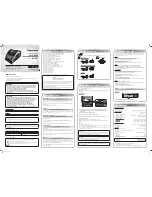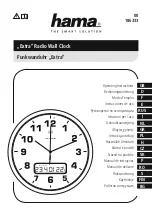
ZN-241G Technical Reference
2000- 2006 Cirronet
Inc
9
M-2400-0006 Rev A
In transparent modes, the radio will accumulate bytes until either it reaches a
maximum size of 109 bytes, or there is a gap in the data longer than the
TxTimeout
. The difference between the ACK and no-ACK modes is that if ACKs
are enabled, the radio will send the message and wait for a response from the intended
recipient. If none is received, it will resend the message up to
TxAttemptLimit
times. When finished, the radio will output a TX_DATA_REPLY packet to indicate
the result to the host. In no-ACK mode, each datagram is sent over the air only once,
there is no acknowledgement, and there is no TX_DATA_REPLY notification.
Auto-Config mode, which is the default, is intended to allow a pair of units to
communicate with each other right out of the box without any configuration by the
user. When configured for Auto-Config, a radio will alternate between base and
remote modes approximately every 4 seconds attempting to link with another radio.
If the link is broken, either due to one radio powering off or going out of range, the
Auto-Config process will resume toggling the device mode until a link is recovered.
In protocol mode, the maximum allowable packet size is 109 bytes (payload bytes),
or a length value of 112.
PanID
Sets the radio's PAN identifier. Radios must have the same PAN identifier in order
for them to link or exchange data. A remote may be given a
PanID
of
0xFFFF
,
which instructs it to take the PAN ID of the first base it finds. In this case, the
CurrPanID
register may be used to read back the ID of the PAN selected.
ChannelMask
Sets the list of channels that the radio is allowed to choose from. (See Section 7 -
Frequency Selection.) For a base radio, it is generally recommended that one channel
be selected in the mask. This gives it a known channel for frequency planning
purposes. If more than one channel is enabled, the base will pick one of them at
random at startup, and not switch from it unless the radio is reset or power-cycled.
For a remote radio, the channel mask specifies which channels it will look for a base
on. For greatest flexibility, it is useful to set a remote for all channels, so that the
remotes need not all be reconfigured if it is necessary to reassign the base to a new
frequency. For a slightly faster link time, set the remote's mask to a single channel.
If a remote loses link, is reset, or is power-cycled, it will rescan all of the channels in
its mask continually until its base is found.
CurrPanID
Used to read back the radio's current PAN identifier. For use with remotes that have
been set with
PanID
=
0xFFFF
.












































